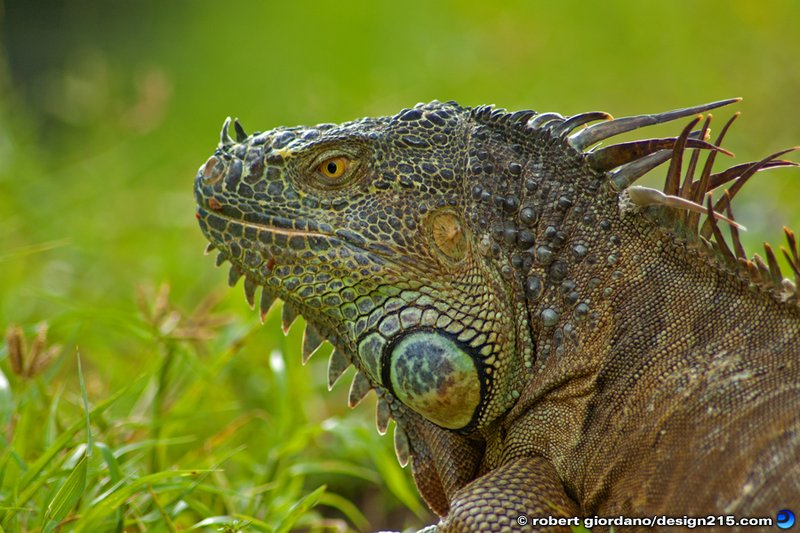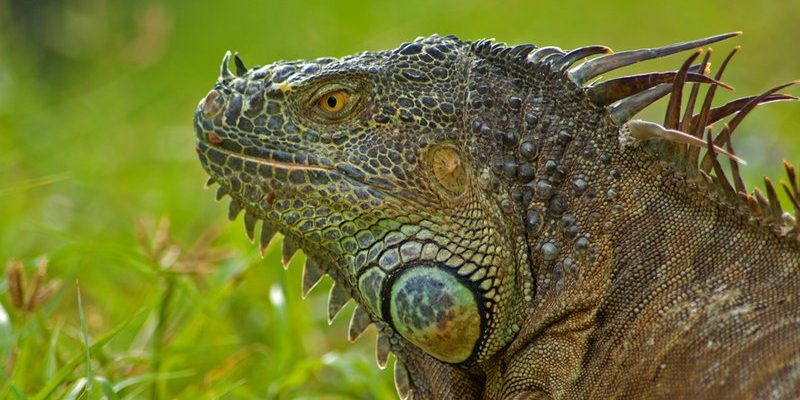
Iguanas are primarily found in Central and South America, where they thrive in tropical forests, mangroves, and even deserts. They can often be seen lounging on branches, basking in the sun. When you dig deeper into their role in the ecosystem, you’ll find that iguanas contribute significantly to the health of their surroundings. So, let’s explore what makes these reptiles so essential to their habitats, and how their actions ripple through the environment.
Understanding Iguanas: A Quick Overview
Iguanas are part of the family Iguanidae and come in various species, the most well-known being the Green Iguana. These reptiles can grow to be quite large, reaching lengths of up to 6.5 feet! Their long tails and distinctive dewlap (the flap of skin under their throat) serve important purposes in both communication and balance.
The Green Iguana is particularly known for its herbivorous diet, primarily consisting of leaves, flowers, and fruits. This diet not only keeps them healthy but also plays a crucial role in their habitat. By feeding on plants, iguanas help maintain the growth and health of their environment. They act like nature’s pruning shears, ensuring that certain plants don’t overgrow and dominate the landscape.
Seed Dispersal: The Iguana’s Gardening Role
One of the most fascinating aspects of iguanas is their role in seed dispersal. When iguanas consume fruits, they don’t digest every seed. Instead, these seeds pass through their system and are expelled in different areas, often far from where they were originally eaten. Here’s the thing: this process is vital for the growth of new plants and the overall diversity of vegetation in their habitat.
Imagine walking through a lush forest and spotting a young tree sprouting up where an iguana once rested—a little piece of nature’s handiwork! This seed dispersal helps to create a healthy and diverse ecosystem. It’s like planting new flowers in your garden, ensuring everything grows harmoniously together.
Maintaining Plant Life and Ecosystem Balance
By feeding on various types of vegetation, iguanas help to keep plant populations in check. If left unchecked, certain plants can dominate an area, leading to less biodiversity. Iguanas act as a balancing force, munching on leaves and fruits, preventing any one species from taking over.
Think of it like a well-tuned orchestra. Each instrument has its part to play, and if one player dominates too much, the harmony is lost. The iguanas help maintain this balance, ensuring that various plants co-exist and thrive, creating a vibrant ecosystem that supports many creatures, from insects to birds.
Habitat for Other Species
Iguanas also provide shelter and habitat for other wildlife. When these reptiles nest in tree hollows or burrows, they inadvertently create homes for various insects, spiders, and small mammals. It’s a classic case of “you scratch my back, and I’ll scratch yours.”
Additionally, iguanas are part of the food web in their habitats. They serve as prey for larger predators, such as birds of prey, snakes, and even large mammals. Their presence helps to support various wildlife populations, creating a more interconnected ecosystem.
The Impact of Human Activity on Iguanas
Unfortunately, iguanas face numerous threats due to human activity. Habitat destruction, pollution, and climate change are just a few factors that can jeopardize their populations. As the jungles are cleared for agriculture or urban development, iguanas lose their homes, affecting the entire ecosystem.
If we don’t take steps to protect these creatures, we might find ourselves losing not just iguanas, but the ecological balance they help maintain. Awareness is key here; by understanding the role of iguanas, we can make informed decisions that promote conservation and habitat protection.
Conservation Efforts: Protecting Iguanas and Their Habitats
Many organizations are working to safeguard iguana populations and their natural habitats. These efforts include creating protected areas, conducting research, and raising public awareness about the importance of iguanas in ecosystems.
Participating in local conservation initiatives, such as clean-up drives or habitat restoration projects, can make a difference. Every little bit helps! By supporting these efforts, we contribute not just to the survival of iguanas, but to the health of entire ecosystems that rely on them.
The Future of Iguanas in Their Ecosystems
The role of iguanas in their natural habitats is more important than many people realize. As we move forward, understanding their contributions will be essential in crafting effective conservation strategies. Protecting iguanas means preserving their ecosystems, which, in turn, supports countless other species.
Here’s the thing: as we learn more about these amazing reptiles, we also learn about the delicate balance of nature itself. If we can manage to protect iguanas and their environments, we’re ultimately safeguarding a piece of our planet’s rich biodiversity.
In closing, the iguana is more than just a fascinating reptile; it’s a vital player in the intricate web of life within its habitat. By appreciating their role and advocating for their protection, we contribute to the health and diversity of our world.

